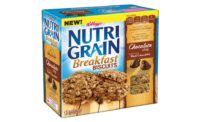Analysts have estimated that millennials account for $200 million in annual buying power, and their spending habits and preferences influence the spending patterns of other generations. They’re considered trendsetters, and capturing their attention can make or break a brand.
The Corn Refiners Association recently published a new white paper on the millennial mindset, “Millennials: It’s Complicated”; for some soundbites encapsulating key points, see “Marketing Food & Beverages to Millennials.” In order to dig into this research, we reached out to Sara Martens, vice president, The MSR Group and a research analyst for the Corn Refiners Association.
Douglas J. Peckenpaugh: How did you define “millennials” for the purposes of this research?
Sara Martens: When talking about millennials, we refer to the generation born roughly between 1980 and 2000. Already 75 million strong, this generation is on track to be the largest generation in U.S. history; as their numbers increase, so too does their earning (and spending) potential. By 2020, millennials 25 and older are expected to make up 20 percent of the U.S. population. In that same period, their spending on at-home food is projected to increase by $50 billion annually.
DJP: How can manufacturers take advantage of their increased purchasing power?
SM: In order for manufacturers to capitalize on millennials’ immense purchasing power, they need to understand the unique factors that motivate millennials to make purchase decisions. Millennials don’t look at brands and products the way other generations do. This insight is particularly relevant to the food and beverage industry, where millennials’ eating habits and food-buying behaviors are quite different from those of previous generations. Marketing to them means embracing a number of paradoxes and learning how to find the sweet spot of apparent contradictions.
DJP: How do the food-buying habits of millennials differ from other generations?
SM: When it comes to making food and beverage purchases, millennials seem to be motivated by both nostalgia and a desire to embrace new experiences.
For example, many of the mass-produced products that millennials enjoyed as kids—for example, Surge, OREO cookies and Kraft Easy Mac—tend to hold a special place in their hearts. In fact, in a study conducted by Northern Kentucky University and Curiosity Insight Stream, 70 percent of millennials agreed that they like to eat the foods they grew up with.
At the same time, millennials also claim to look for a more-authentic food “experience.” The same study found that 61 percent of them agree that they look for more-interesting versions of run-of-the-mill products because they enjoy being original.
Navigating this paradox can be tricky. In order to capitalize on both millennials’ nostalgia and their desire to try new foods, it may benefit manufacturers to release new versions of beloved products. For example, Nabisco often releases new flavors of its classic OREO sandwich cookie—a brand that continues to see sales growth.
DJP: What are the qualities that a typical millennial shopper looks for in something like a snack food or baked good?
SM: A recent Euromonitor study found that millennials snack much more than other generations. In fact, they consume an average of 3.05 snacks per day compared to 2.26 snacks consumed daily by generation X, and 1.53 snacks by baby boomers.
Because of this frequent propensity to snack, millennials are often replacing traditional meals with snacks, which means they seek options with added benefits, such as protein.
DJP: Are there any ingredients millennials are trying to avoid?
SM: I think some manufacturers can become confused by millennials’ ingredient avoidance, because this generation is more likely to talk about what they’re doing on social media. However, they’re very selective with what they’re sharing. For example, they’re more likely to share a photo of their locally crafted goat cheese salad than their slice of pizza from a restaurant franchise.
When it comes to food ingredients, millennials aren’t as discriminating as conventional wisdom might lead one to believe. Rather than avoiding specific ingredients, millennials prefer to focus on overall health—and because of this, marketing efforts may be more successful if manufacturers relay added benefits, instead of stigmatizing any single ingredient.







